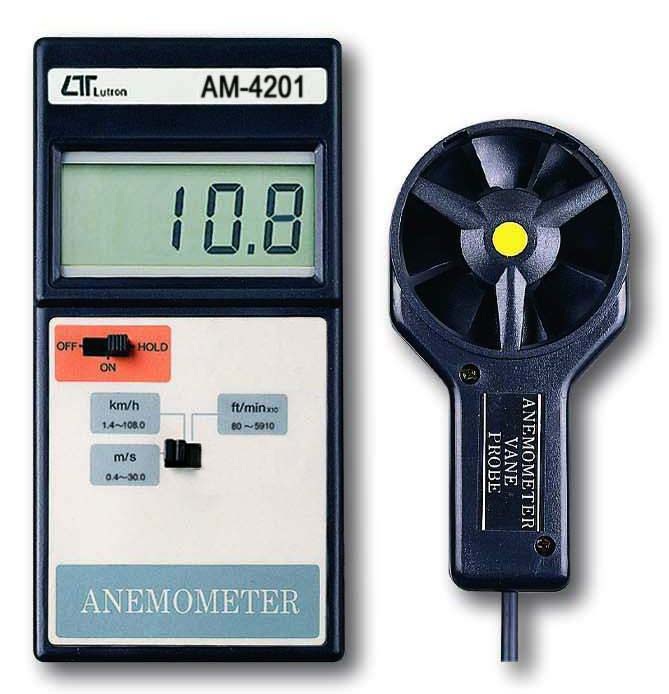Anemometer Innovations: The Latest Innovation for Wind Rate Dimension
Anemometer Innovations: The Latest Innovation for Wind Rate Dimension
Blog Article
Checking Out the Features and Advantages of Anemometers for Weather Lovers and Professionals
From mug anemometers to sonic anemometers, each kind brings its one-of-a-kind set of benefits and applications, losing light on numerous facets of climatic problems. As we dig right into the features and advantages of anemometers, a deeper understanding emerges not only of prevailing climate phenomena however additionally of the broader ramifications for sectors like wind energy manufacturing and ecological research.
Value of Anemometers in Weather Monitoring
Anemometers play a crucial function in weather monitoring by giving precise measurements of wind speed, aiding in projecting and understanding weather patterns. These tools, ranging from conventional mug anemometers to modern-day ultrasonic anemometers, are important for meteorologists, researchers, and climate enthusiasts alike.

Types of Anemometers and Their Applications
With the crucial duty anemometers play in weather condition tracking and projecting, understanding the numerous sorts of these instruments and their applications ends up being crucial for experts and lovers in the field. The most common kinds of anemometers include mug anemometers, vane anemometers, hot-wire anemometers, and ultrasonic anemometers. Cup anemometers are composed of three or four mugs mounted on straight arms that rotate with the wind, gauging its rate. Vane anemometers, on the other hand, use an openly revolving vane to straighten with the wind direction, supplying both wind speed and instructions dimensions. Hot-wire anemometers operate based on the concept of convective heat transfer, where the cooling effect of the air flow is gauged to determine wind speed. Ultrasonic anemometers use ultrasonic audio waves to compute wind rate and instructions precisely.
Cup anemometers are suitable and durable for basic climate surveillance, while vane anemometers are preferred for directional dimensions. Ultrasonic anemometers are non-intrusive and offer high precision, frequently utilized in research and specialized weather condition surveillance applications.
Advantages of Utilizing Anemometers in Forecasting
In weather forecasting, the use of anemometers supplies invaluable advantages for improving the accuracy of climate projecting. Anemometers measure wind speed and instructions, providing important information for predicting climate patterns. By including wind data into projecting versions, meteorologists can much better comprehend the activity of weather systems, anticipate adjustments in weather, and problem a lot more exact projections.
Additionally, anemometers play a crucial function in assessing potential weather condition hazards. Checking wind speeds aids forecasters forecast severe climate occasions such as typhoons, hurricanes, and winter season tornados with higher precision. This early caution system enables authorities to release timely informs and execute needed safety measures, decreasing the risks to life and residential property.
Furthermore, anemometers assist in optimizing sustainable power production. By evaluating wind patterns, meteorologists can identify suitable areas for wind farms and forecast power output, adding to the effective generation of wind power.

Anemometers in Wind Energy Production
Provided the vital function anemometers play in offering accurate wind data for climate projecting and hazard evaluation, their significance encompasses the realm of wind energy manufacturing. Anemometers read this post here are important instruments in the area of wind power, where the measurement of wind speed and direction is crucial for determining the feasibility and effectiveness of wind generator installations. By accurately determining wind rates at varying heights, anemometers assist optimize the placement and style of wind turbines to make best use of energy output.
In wind farms, anemometers are tactically positioned to collect real-time wind data that is made use of to evaluate the prospective power manufacturing of a site. This information is important in establishing the economic stability of wind energy tasks and in forecasting energy generation to make sure grid stability. In addition, anemometers help in keeping track of wind problems to maximize turbine performance, avoid damages from high winds, and make certain the safety and security of workers functioning in the vicinity of wind turbines.
Enhancing Climate Understanding With Anemometers

Anemometers play a key function in boosting our understanding of microclimates. These local weather condition problems can differ considerably from wider regional projections, making it important to have accurate information for details locations. anemometer. By tactically placing anemometers in numerous locations, researchers can collect thorough details on how wind acts in various surfaces, metropolitan settings, or bodies of water
Additionally, anemometers contribute to improving weather condition projecting versions by providing real-time data on wind behavior. This info is particularly useful for predicting serious weather condition events, optimizing agricultural methods, and supporting markets like aeronautics and maritime navigation. Generally, anemometers are vital tools that allow us to dig much deeper right into the check out this site intricacies of weather systems, eventually resulting in even more precise predictions and better-informed decisions.
Conclusion
In verdict, anemometers play a critical duty in weather surveillance and projecting by determining wind rate and instructions. Anemometers likewise have applications in wind energy production, more highlighting their significance in both meteorology and sustainable energy industries.
From mug anemometers to sonic anemometers, each kind brings its unique set of benefits and applications, losing light on different aspects of climatic problems. These tools, ranging from standard cup anemometers to contemporary ultrasonic visit site anemometers, are vital for meteorologists, researchers, and weather lovers alike. The most usual kinds of anemometers consist of cup anemometers, vane anemometers, hot-wire anemometers, and ultrasonic anemometers. Cup anemometers are appropriate and durable for basic climate tracking, while vane anemometers are favored for directional measurements. Anemometers are important instruments in the field of wind power, where the measurement of wind rate and direction is essential for determining the usefulness and performance of wind turbine setups.
Report this page